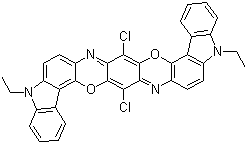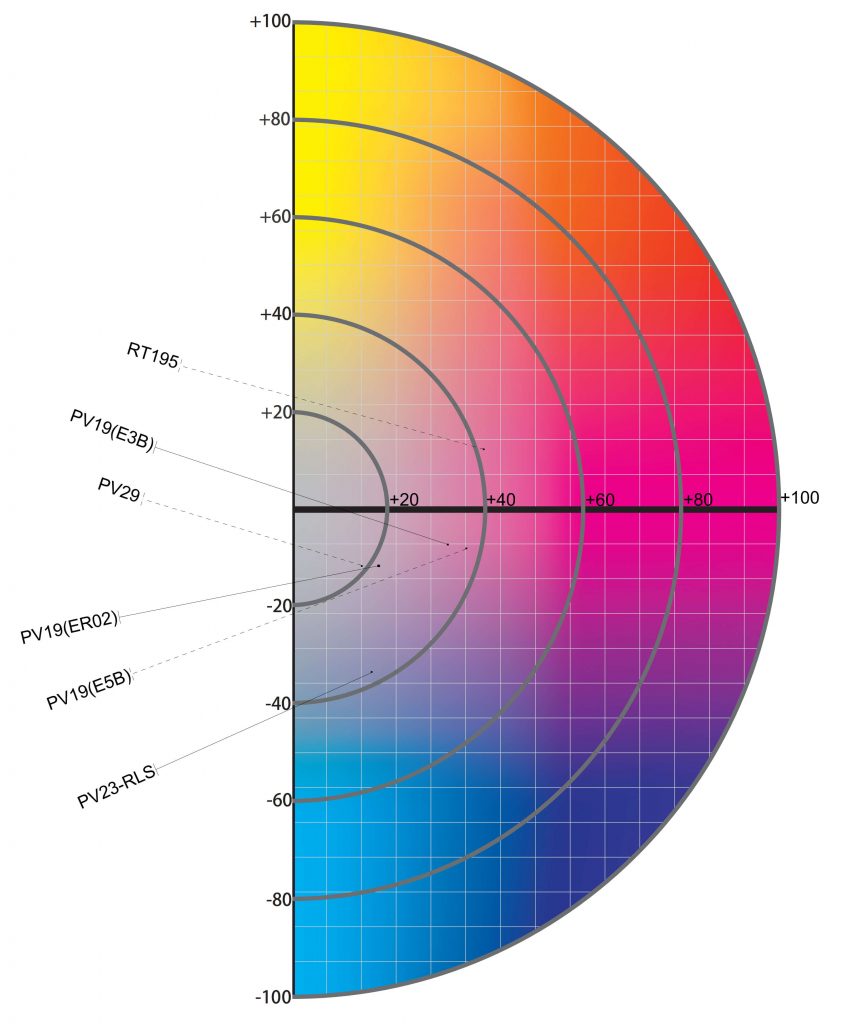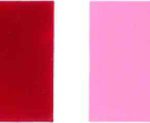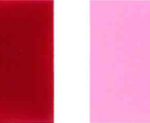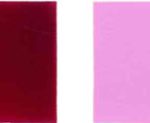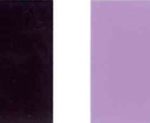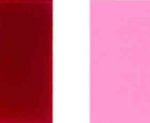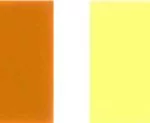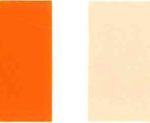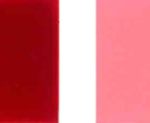Violeta pigmento RLS violeta 23-Corimax
Pigment violet 23 is an organic compound that is a commercial pigment. It is member of the dioxazine family of heterocyclic compounds, but derived from carbazoles. It is prepared by condensation of chloranil and 3-amino-N-ethylcarbazole. It has a centrosymmetric angular structure. For many years, the structure was assigned, incorrectly, as having a "linear structure" (EC no. 228-767-9, CAS RN 6358-30-1) which differ in terms of the carbazole ring fusion.
Pigment violet 23 is prepared by condensation of an aniline with chloranil.[From Wiki]
Parámetros técnicos do pigmento violeta 23
| Índice de cores Nº. | Violeta pigmento 23 |
| Nome do produto | Corimax Violet RLS |
| Categoría do produto | Pigmento orgánico |
| Velocidade da luz (revestimento) | 7 |
| Resistencia ao calor (revestimento) | 200 |
| Velocidade da luz (plástico) | 7 |
| Resistencia ao calor (plástico) | 250 |
Cor | 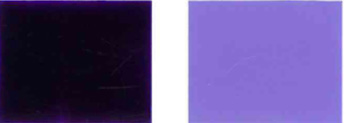 |
| Distribución de tonalidades |
Zeyachem is a global supplier of Dioxazine Violet pigments that provide a bluish violet shade, a color not obtainable by other pigments.
The extremely high color strength of Pigment violet 23 makes it a suitable pigment as a shading component. PV23 also exhibits excellent heat fastness and light fastness properties, making it suitable for inks and many paints and coatings applications.
Corimax Violet RLS is a reddish blue shade Dioxazine Violet (PV23) pigment with very high color strength and excellent overall fastness properties, suitable for inks, paints and coatings, including industrial coatings, powder coatings and automotive coatings.
Características:
low viscosity, high gloss, high color strength. Pigment Violet 23 is a transparent purple violet pigment with high saturation and tinting strength.
C.I.Pigment Violet 23 show good tinting strength in flexible PVC while poor resistance to immigration.
P.V.23 heat resistance above 230℃ in polyolefins, when used in transparent PS, temperature shall below 220℃, above this PV 23 shall decompose. When worked in polyester, it is 280℃ stable in 5 hours, while concentration shall above 0.05%.
The pigment is easy to use and requires no rinsing. To ensure maximum color intensity and proper adhesion to the pulp, a retention agent must be added to the pulp before the pigment is applied. Our pigments are supplied by volume sizes. The actual weight varies, depending upon the density of the pigment.
Aplicación :
Recomendado para pinturas automotivas, revestimentos arquitectónicos, revestimentos de bobinas, pinturas industriais, revestimentos en po, pegadas de impresión, PVC, caucho, PS, PP, PE, PU, tintas offset, tintas a base de auga, tintas solventes, tintas UV.
Pigment Violet 23 (PV 23) has now been around for more than 55 years. Its beginnings go back to 1928, when a patent was filed for the pigment after researchers at the Hoechst company in Germany first undertook the multistage synthesis based on carbazole, an ingredient of coaltar, and chloranile. Until the end of World War II the pigment was only used to process diamine light blue, a direct dyestuff for cotton.
With the invention of reactive dyes, which considerably simplified the dyeing and printing process for cellulose fibers, this application lost its importance. A new and promising use for PV 23 was quickly found due to the pigment’s ability to produce unique colors.
PV 23 has been used as a pigment since 1953. PV 23 belongs to the group of high-performance polycyclic pigments (HPP’s) that are used whenever the requirements for a colorant are particularly high. These include high light fastness and weather fastness, fastness to solvents, and heat stability. In addition, PV 23 stands out by its high coloring power. Under the electron microscope, the crude violet shows a highly granular crystalline form, whereas the pigment particles are miniscule.
————————————————————————————————————————————————— ——————————————————
Información relacionada
Propiedades físicas e químicas:
Tinta ou luz: azul púrpura
Densidade relativa: 1,40-1,60
Densidade a granel / (lb / gal): 11.7-13.3
Punto de fusión / ℃: 430-455
Tamaño medio de partícula / μm: 0,04-0,07
Forma de partícula: cúbica / varilla
Superficie específica / (m2 / g): 45-102
Valor do pH / (suspensión do 10%): 6,2
Uso do produtoO violeta 23 de pigmento úsase principalmente para colorear revestimentos, tintas, caucho e plásticos, e tamén para colorear fibras sintéticas
Hai 124 tipos de marcas de formulación comercial do pigmento. O carbazoazina é unha especie de variedade violeta azul cunha aplicación forte e inusual, ea superficie específica do RN violeta monolito é de 74m2 / g. É amplamente empregado en diversos campos como o revestimento, a impresión de tinta, a impresión de plásticos e tecidos e a tinguidura. Ten boa rapidez para vernizar ao colorear. Pode usarse para pintura de secado ao aire, pintura OEM para automóbiles e pintura para cocer, especialmente para a pintura de látex con toner CuPc e un ton claro de luz. Pódese usar para colorantes plásticos, cunha resistencia á calor de 280 ℃ en poliolefina e alta retención de cor (só o 0,07% da concentración de pigmento é necesario para HDPE con 1 / 3SD); tamén se pode usar para colorear poliéster e PE.
Principio de síntese: O carbazol úsase como materia prima e a etilación de N realízase a presión normal en presenza dun catalizador de inversión de fase e realízase unha reacción de nitración e unha reacción de redución para sintetizar o 2-amino-N-etilcarbazol; A 3,5,6-tetracloroparaquinona (Chloranil) está sometida a reaccións de condensación e peche do anel, filtradas, lavadas con auga e secadas para obter un violeta carbazol bruto; finalmente, o tratamento xeral da pigmentación por amasado ou amasado para obter o pigmento violeta 23.
alias :Pigment Violet RL; 51319; C.I. Pigment Violet 23; 8,18-Dichloro-5,15-diethyl-5,15-dihydrodiindolo(3,2-b:3',2'-m)tri- phenodioxazine; CI 51319; Diindolo(3,2-b:3',2'-m-)triphenodioxazine, 8,18-dichloro-5,15-diethyl-5,15-dihydro-; Carbazole Dioxazine Violet; Carbazole Violet; Chromofine Violet RE; Cyanadur Violet; Dioxazine Violet; Dioxazine purple; EB Violet 4B7906; EMC Violet RL 10; Fastogen Super Violet RN; Fastogen Super Violet RN-S; Fastogen Super Violet RTS; Fastogen Super Violet RVS; Helio Fast Violet BN; Heliofast Red Violet EE; Heliogen Violet; Heliogen Violet R Toner; Hostaperm Violet RL; Hostaperm Violet RL Special; Hostaperm Violet RL Special 14-4007; Lake Fast Violet RL; Lake Fast Violet RLB; Lionogen Violet R 6100; Lionogen Violet RL; Lionol Violet HR; Monolite Fast Violet R; PV Fast Violet BL; PV Fast Violet RL-SPE; Paliogen Violet 5890; Paliogen Violet L 5890; Permanent Violet; Permanent Violet R; Sandorin Violet BL; Sanyo Permanent Violet BL-D 422; Sumikacoat Fast Violet RSB; Sumitone Fast Violet RL; Sumitone Fast Violet RL 4R; Sumitone Fast Violet RLS; Symuler Fast Violet BBL; Symuler Fast Violet BBLN; Unisperse Violet B-E; Vynamon Violet 2B; 8,18-Dichloro-5,15-diethyl-5,15-dihydrodiindolo(3,2-b:3',2'-m)triphenodioxazine; Diindolo(3,2-b:3',2'-m)triphenodioxazine, 8,18-dichloro-5,15-diethyl-5,15-dihydro-; 8,18-dichloro-5,15-diethyl-5,15-dihydrocarbazolo[3',2':5,6][1,4]oxazino[2,3-b]indolo[2,3-i] phenoxazine
Estrutura molecular: